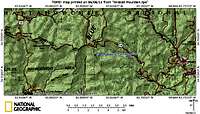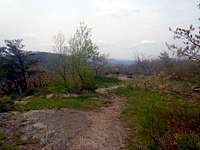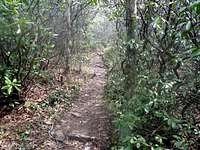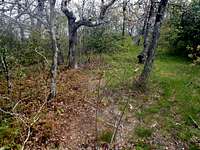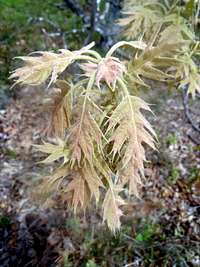-
 16622 Hits
16622 Hits
-
 84.82% Score
84.82% Score
-
 19 Votes
19 Votes
|
|
Mountain/Rock |
|---|---|
|
|
34.71740°N / 83.8382°W |
|
|
White |
|
|
Spring, Summer, Fall, Winter |
|
|
3780 ft / 1152 m |
|
|
Overview
Wildcat Mountain holds the distinction to peak nerds of being the 35th highest peak with 300 feet or more prominence within the state of Georgia. It’s perhaps known to normal folk as a hike offering great, wide-open views from the bare-rock overlook below the summit. It’s surely known to many backpackers spending the night in the Whitley Gap Shelter as that darn hill they’ve got to re-climb before re-gainng the AT.
Wildcat Mountain is a beauty of a peak. From Cowrock Mountain to the west, the peak looks strong and dramatic, steeply sloping into the Town Creek Drainage. The views from the mountain’s overlook are wide open, and winds rushing up the slope are exhilarating. Many Appalachian Trail hikers blaze right past this lovely little mountain, but don’t even think about it. A short, on-trail side-trip will get you to some of the best views in the region. Your legs will forgive you the extra effort.
Rank: 35th highest peak in Georgia
Prominence: 640 feet
USGS Quad: Cowrock
Planning Map: Appalachian Trail Conservancy Springer Mountain to Bly Gap GEORGIA
Rank & Prominence: Lists of John
Getting There & Route Information
The summit of Wildcat Mountain sites approximately 6/10ths of a mile off the AT on the Whitley Gap Shelter side-trail. Simply follow the blue-blazes to the overlook. The actual summit is not far past the wide-open views and is indistinct and tree-covered.
The nearest road to Wildcat Mountain is GA Route 348. Parking at Hogpen Gap off GA 348, the summit of Wildcat Mountain can be reached via a hike of less than 2 miles roundtrip and 300 feet of net elevation gain.
For those backpacking the AT, this mountain makes a great lunch spot and place to take a break. It’s understandable to not want to add the mileage to one’s day, but trust me when I tell you, on a clear day, no one will regret a visit to the overlook of this peak.
Red Tape & Special Considerations
There is no fee to visit this part of the Chattahoochee National Forest and permits are not required for overnight stays in the backcountry. Please be mindful of posted Forest Service user warnings, such as “problem bear” alerts and campfire bans. Note that the Appalachian Trail is open to foot traffic only. Motorized vehicles and pack animals are not permitted. Wildcat Mountain lies within the 9,100 acre Raven Cliffs Wilderness. Please practice Leave No Trace principals:
1. Plan Ahead and Prepare
2. Travel and Camp on Durable Surfaces
3. Dispose of Waste Properly
4. Leave What You Find
5. Minimize Campfire Impacts
6. Respect Wildlife
7. Be Considerate of Other Visitors
Camping & Lodging
AT Backpacker Camping
• The nearest shelter to Cowrock Mountain is the Whitley Gap Shelter. Due to proximity to GA SR 348, this shelter is said to fill up with casual weekend traffic.
• Low Gap Shelter, 4.4 mile northbound on the AT from Hogpen Gap at GA SR 348, is an excellent choice for backcountry accommodations. A burbling brook runs past the shelter, which is downhill from the AT, while some fine tent camping options can be found uphill from the shelter on the side-trail.
Hiker Hostel
The Walasi-Yi Center at Neels Gap has lodging in their historic hiker hostel. The hostel is open 7 days a week, 365 days a year, lodging is available on a first come, first served basis.



